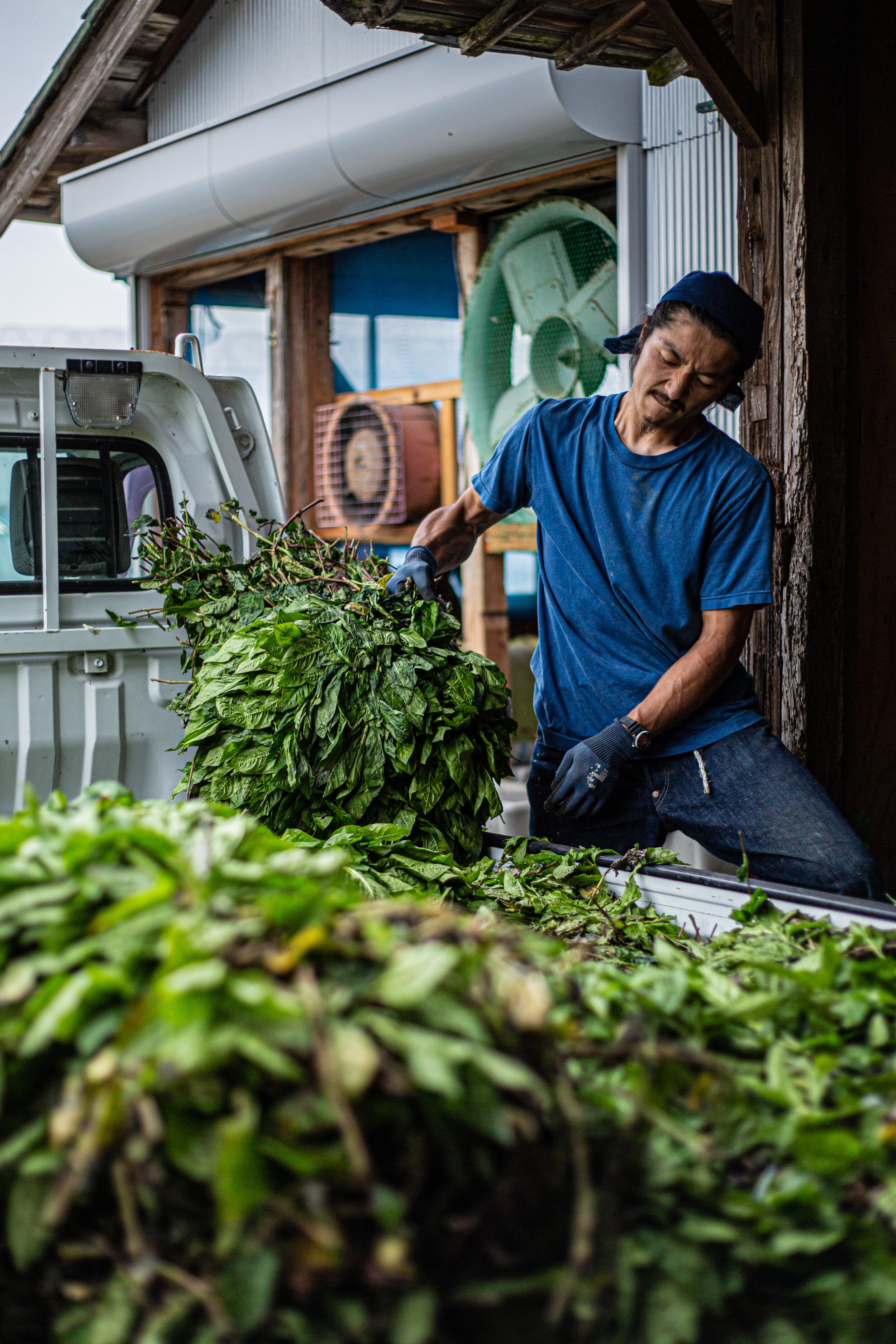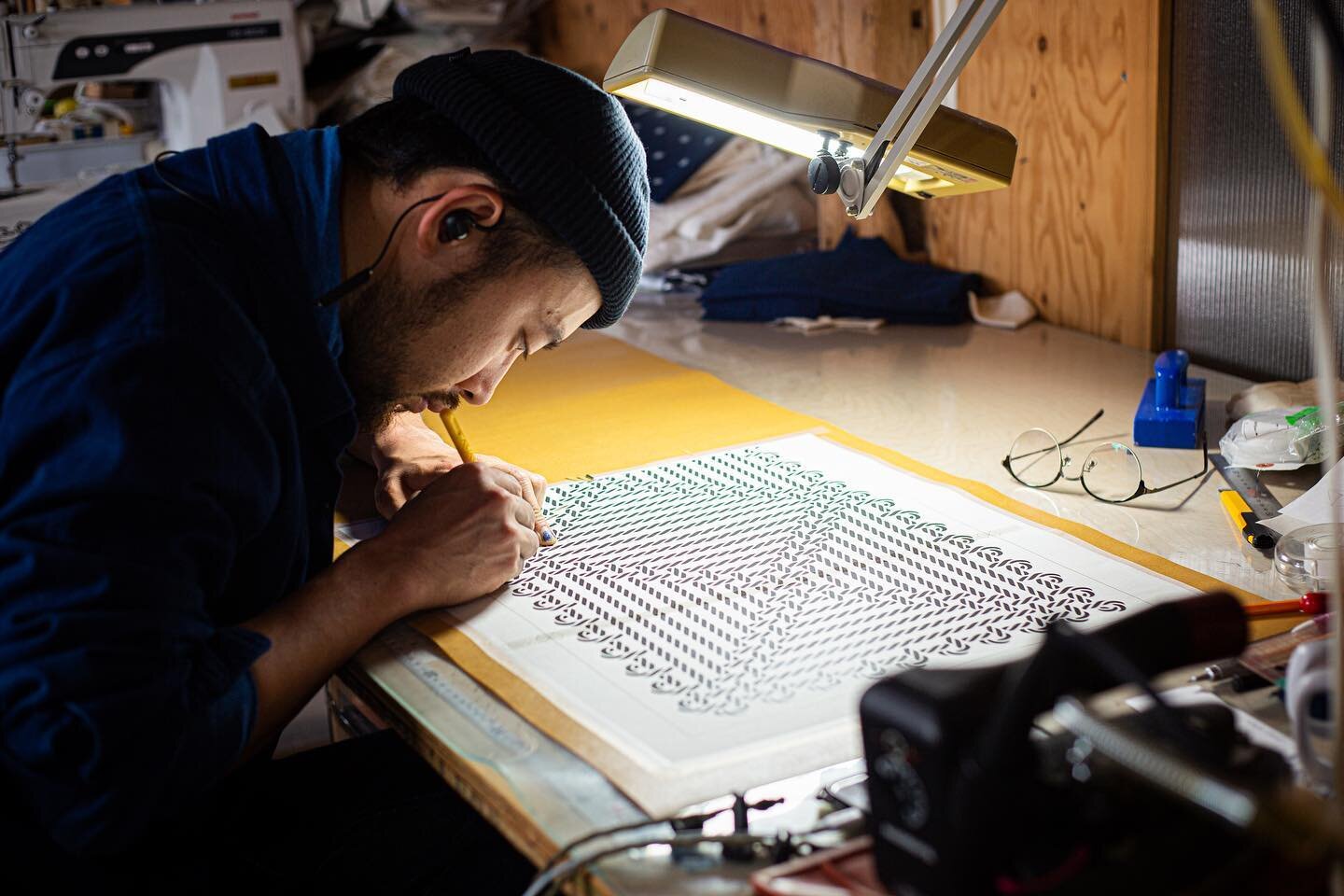The Art of Natural Indigo Dye
"Tadeai" (Persicaria tinctoria).
Indigo, the popular blue dye, has been highly valued around the world for almost five millennia. Although we are unclear of the date of its first use, there are records of indigo dye being used by ancient civilisations dating back thousands of years.
Developed in various regions around the world, indigo had an immense impact on many communities and played a part in influencing history, culture, society and economy. The vibrant and versatile dye is compatible with a variety of natural fibres, such as cotton, flax and hemp, producing distinct blue shades from light to dark and condensed. However, indigo is not only revered for its beauty; the natural dye also has antibacterial properties, can act as insect repellent and is effective in preventing odours.
Surprisingly, indigo is one of the few natural blue dyes that have been found. Unlike other botanical dyes which must be boiled or crushed to release their pigment, indigo requires a complex molecular process involving the fermentation of the plant's leaves. The natural pigment is produced from these plants (Indigofera tinctoria, Indigofera suffructiosa and Persicaria tinctoria) through a process similar to alchemy. In Japan, the process of drying and fermenting indigo leaves is known as "sukumo". This process is carried out to the highest quality in Tokushima Prefecture, Shikoku.
It is not known precisely when indigo arrived in Japan but it is believed to have been introduced from India via the Silk Road route. Nevertheless, from the 8th century AD, the Japanese began to develop refined techniques for producing designs with different blue hues. In the beginning, the blue dye was primarily used for aristocrats but it became increasingly popular with a wider variety of people around the 17th century. In the 19th century, a British scholar who visited Japan was extremely impressed by the colour of the indigo commonly seen in the area and named it "Japan blue".
Unfortunately, following the Industrial Revolution, the production of natural indigo could no longer meet the demands of the clothing industry and the search for synthetic replacement for indigo began. Due to this, the use of natural indigo has been drastically reduced all over the world and, even today, most textile production makes use of the synthetic replacement. However, in positive recent developments, the use of non-toxic and natural indigo has seen significant resurgence in recent years. In many ways, the increased usage of natural indigo dye aims to combat the negative environmental and social impact of synthetic dyes.
With the desire to preserve the traditional Japanese craftsmanship BUAISOU, the indigo farm and dye studio was established in Kamiita-cho, Tokushima Prefecture in 2015.
“Buaisou’s Sukumo bandana shows the year long process by which Japanese Natural Indigo, also known as Sukumo, is produced.
The images represent the four seasons of Sukumo.
Spring: Planting of the indigo seeds.
Summer: Cultivation and Harvesting of indigo leaves.
Fall: Processing through fermentation of indigo leaves from dry leaf to Sukumo.
Winter: Preparation of soil for next years indigo”
Indigo vats.
BUAISOU
At BUAISOU, the founder Kakuo Kaji with his team (Yuya Miura, Tadashi Kozono, Ken Yuki and Kazuma Osuka) carry out all of the processes to produce their natural indigo dye, from the cultivation of raw indigo and the fermentation of indigo leaves (Sukumo) to the dyeing, drawing and production of their garments.
The beautiful and solid colour is achieved by using only indigo leaves, wood ash water (or Lye), wheat bran and shell lime.
BUAISOU upholds the value of the unique, handcrafted art of dyeing with indigo, whilst modernising their garment collection with minimalist design and sharing the beauty of natural dyeing around the world.
Indigo Farm.
The composting process "Kirikaeshi" day. Applying water on to Sukumo, then turn it repeatedly once a week, it'll take about 4 months.
Process of drying and fermenting indigo leaves is known as "sukumo".
“At BUAISOU, we are involved in every step. From planting the indigo seeds to producing the dyes and to dyeing the fabric.”
Making the indigo dye-vat.
Stirring indigo vats.
Dyeing cotton yarn.
BUAISOU uses ramie for the hand-stitched buttonhole. It is dyed with their own persimmon juice solution that is distilled for 5 years.
TECHNIQUES
The team uses traditional techniques: Tie-Dyeing (Shibori Zome), Clamp Resist Dyeing (Itajime), Batik (Roketsu Zome), Stencil Dyeing (Kata Zome), Discharge Dyeing (Bassen), Gradation Dyeing (Dan Zome) and Plane Dyeing (Beta-Zome). With these techniques BUAISOU creates minimal and timeless pieces, and through the collaboration with brands around the world, the farm and natural dye studio works to revive the artisanal approach of using natural indigo dye.
ROKETSU-ZOME : Batik.
“In Roketsu-zome (Japanese), or Batik, wax is heated and melted, then applied to fabric by brush or other means to create dye-resistant areas. After dyeing, hot water is poured over the fabric, melting the wax and revealing the design. In our studio we primarily use a brush for application, but have other various tools as well, such as the traditional Indonesian Batik tool, the Canting.”
At the farm and dye studio, they also offer workshops and activities to introduce the technique to more people, successfully highlighting the charm and benefits of using natural indigo.
In the future, with the same dedication and care, BUAISOU aims to grow their own cotton and weave hand-dyed garments themselves.
From Left, Yuya Miura, Tadashi Kozono, Kakuo Kaji(Founder), Ken Yuki and Kazuma Osuka.




